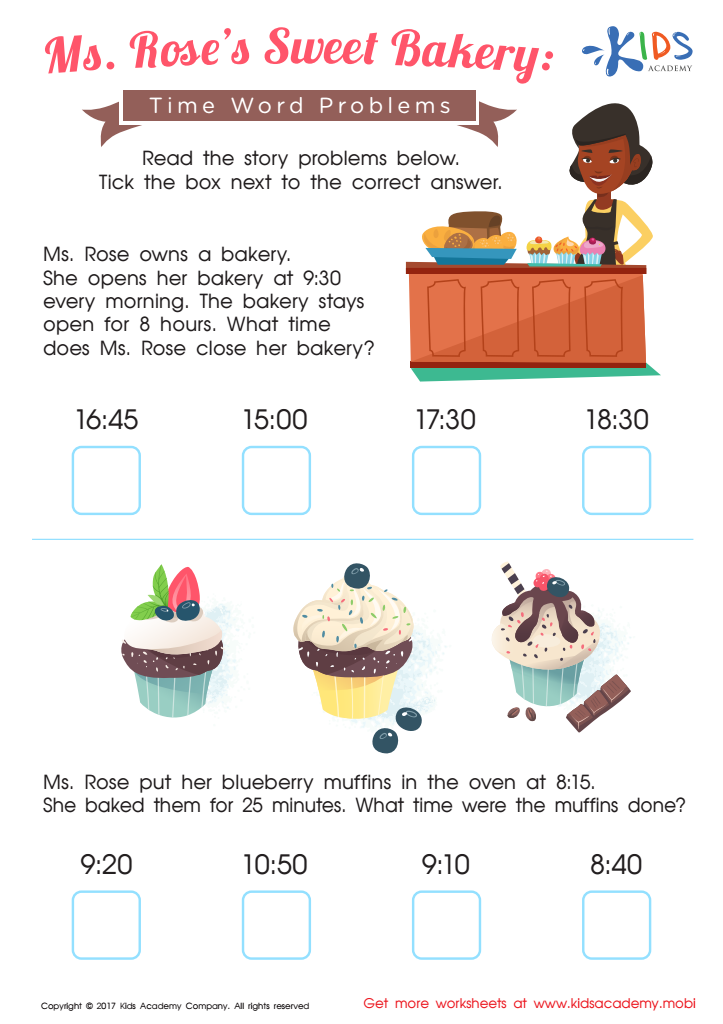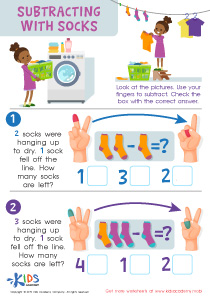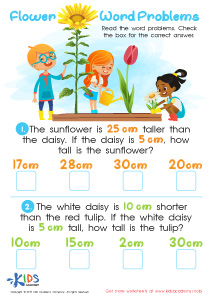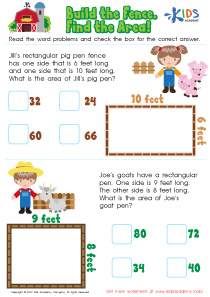Time Word Problems Worksheets for 4-Year-Olds
1 filtered results
-
From - To
Introduce your preschoolers to the concept of time with our engaging Educational Downloadable Worksheets designed specifically for 4-year-olds! These fun and interactive Time Word Problems worksheets are perfect for young learners, helping them grasp the basics of time-telling through simple, age-appropriate challenges. Each worksheet is crafted to enhance understanding, counting, and critical thinking skills while keeping the learning process enjoyable. Whether at home or in the classroom, these downloadable resources are fantastic tools for sparking curiosity and foundational learning in young minds. Get your set today and watch your little ones embark on their time-telling adventure!


Ms. Roseв's Sweet Bakery Time Worksheet
The Importance of Educational Homework Sheets on Time Word Problems for Four-Year-Olds
When it comes to laying a strong educational foundation for young children, incorporating fun and engaging methods is key. Educational homework sheets, particularly those focused on Time Word Problems, play an essential role in nurturing a child's cognitive and analytical skills from an early age. For four-year-olds, these worksheets are not just about learning to tell time; they are a holistic tool that aids in their overall developmental milestones.
One of the primary reasons why time word problems are useful is that they integrate the concept of time into a child's daily routine in a playful and engaging manner. At the age of four, children are just beginning to understand the sequence of daily events such as morning, afternoon, and night. Educational homework sheets that feature time word problems help them to associate specific times with routine activities, like having breakfast at 8:00 AM or bedtime at 7:00 PM. This not only helps in understanding the clock but also in establishing a sense of time management from a young age.
Moreover, these worksheets enhance numerical literacy. Time word problems often require children to count, calculate, and understand numerical order. For example, figuring out how long a nap lasts if it starts at 1:00 PM and ends at 2:30 PM encourages children to work with numbers and understand concepts like hours and minutes. This early familiarity with numbers is crucial as it paves the way for more complex mathematical concepts that they will encounter in school.
Another significant benefit of time word problems for four-year-olds is the development of critical thinking and problem-solving skills. Each worksheet presents a scenario that requires a child to think and reason. For instance, a question might ask: "If you start watching a movie at 3:00 PM and the movie is two hours long, what time does the movie finish?" Here, the child needs to analyze the information and come to a conclusion. Such exercises boost logical thinking and decision-making skills.
Furthermore, educational homework sheets are designed to be interactive, which encourages parental involvement. As parents help their children with these worksheets, it provides an opportunity for quality bonding time, while also allowing parents to directly contribute to their child’s learning process. This involvement is critical as it boosts the child’s confidence and reinforces learning through positive reinforcement.
Additionally, using time word problems helps in enhancing language skills. These problems are structured in a narrative form, requiring children to read, comprehend, and follow instructions. This dual focus on numeracy and literacy is invaluable as it ensures a well-rounded approach to learning. As children decode the words to understand and solve the problems, they inadvertently improve their vocabulary and comprehension skills, which are fundamental to all areas of education.
The format of educational homework sheets is also tailored to be visually appealing and engaging for young children. Bright colors, fun characters, and sometimes even interactive elements like clocks with movable hands are incorporated to capture the interest of young learners. This not only makes the learning process enjoyable but also increases the likelihood that children will engage with the material without feeling pressured or overwhelmed.
Inclusivity is another key aspect of these worksheets. They are designed to cater to various learning styles. For example, visual learners benefit from the colorful images and diagrams, auditory learners might engage through discussions with parents, and kinesthetic learners can benefit from using physical objects like toy clocks to practice setting times as per the problems given. This multifaceted approach ensures that no child is left behind, regardless of their preferred learning method.
Lastly, time word problems help in setting a routine. Children, at the age of four, thrive on routine as it gives them a sense of security and control. These worksheets often mimic real-life scenarios that they can relate to, helping them understand how their day is structured. This can also assist in easing anxiety for children who struggle with transitions, as they understand what comes next in their day.
In conclusion, educational homework sheets focused on time word problems are incredibly beneficial for four-year-olds. They are not just tools for learning how to tell time but are instrumental in developing numerical and language skills, logical thinking, and problem-solving abilities. They also promote parental involvement, cater to various learning styles, and help in establishing routine—all through engaging and age-appropriate content. By starting early with such educational practices, we can ensure a smoother academic journey for our children.

 Assign to the classroom
Assign to the classroom











